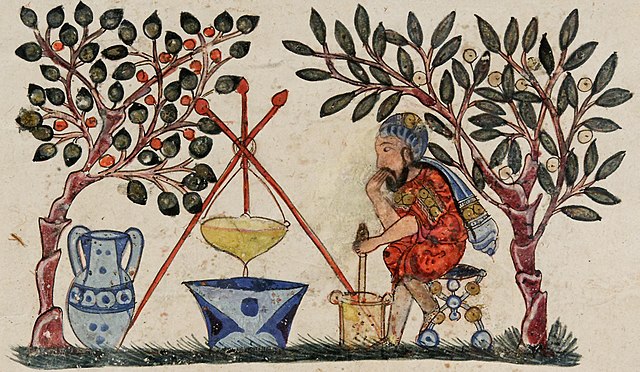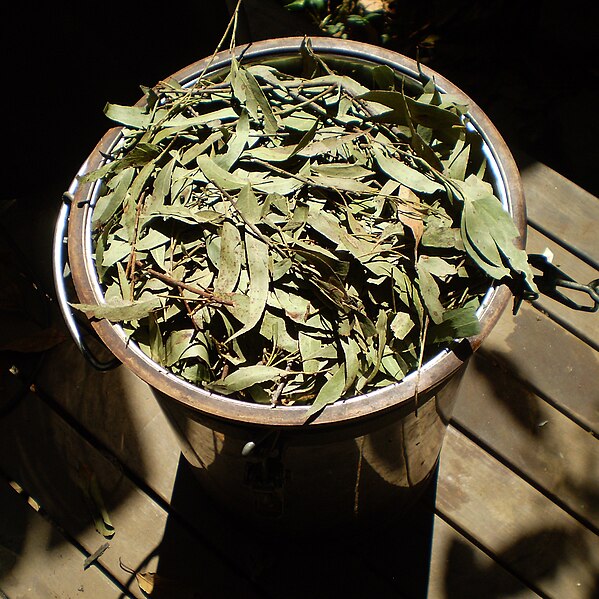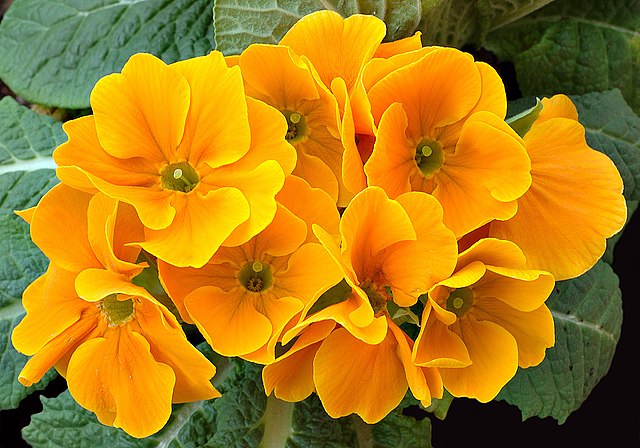Herbal medicine is the study of pharmacognosy and the use of medicinal plants, which are a basis of traditional medicine. With worldwide research into pharmacology, some herbal medicines have been translated into modern remedies, such as the anti-malarial group of drugs called artemisinin isolated from Artemisia annua, a herb that was known in Chinese medicine to treat fever. There is limited scientific evidence for the safety and efficacy of many plants used in 21st-century herbalism, which generally does not provide standards for purity or dosage. The scope of herbal medicine sometimes include fungal and bee products, as well as minerals, shells and certain animal parts.
An antique selection of herbal medicines
A physician preparing an elixir, from an Arabic version of Dioscorides's pharmacopoeia, 1224
Leaves of Eucalyptus olida being packed into a steam distillation unit to gather its essential oil
A herb shop in the souk of Marrakesh, Morocco
Pharmacognosy is the study of crude drugs obtained from medicinal plants, animals, fungi, and other natural sources. The American Society of Pharmacognosy defines pharmacognosy as "the study of the physical, chemical, biochemical, and biological properties of drugs, drug substances, or potential drugs or drug substances of natural origin as well as the search for new drugs from natural sources".
Dioscorides’ Materia Medica, c. 1334 copy in Arabic, describes medicinal features of various plants.
The carotenoids in primrose produce bright red, yellow and orange shades.






